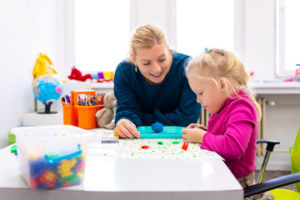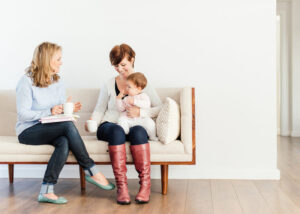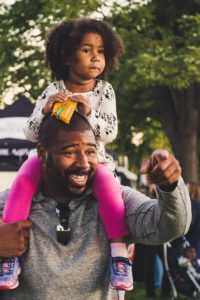Child Therapy
Child counseling is a type of therapy that focuses on young children, teens, and adolescents with one or more mental illnesses. It also provides aid to youths, who have experienced trauma, and/or who are experiencing a dysfunctional or stressful home environment.
Many of the issues these children face mimic the issues adults face in their day-to-day lives. Some of these common issues include anxiety, depression, and grief. The goal of child counseling, however, is to break down problems into manageable parts, so children can better understand and cope with them.
WHAT IS TRIPLE P?
Triple P (Positive Parenting Program) is a family intervention for parents and their child up to 12 years old. Triple P does not tell you how to be a parent. It is more like a toolbox of ideas. You choose the strategies you need. You choose the way you want to use them. It is all about making Triple P work for you.
WHAT DOES TRIPLE P DO?
The three Ps in ‘Triple P’ stand for ‘Positive Parenting Program’ which means your family life is going to be much more enjoyable.
Triple P helps you:
Raise happy, confident kids
Manage misbehavior so everyone in the family enjoys life more
Set rules and routines that everyone respects and follows
Encourage behavior you like
Take care of yourself as a parent
Feel confident you’re doing the right thing
Triple P has been tested with thousands of families over more than 35 years and been shown to help families in many different situations and cultures. In fact, Triple P’s evidence base now includes:
- More than 830 international trials, studies and published papers, including
- More than 290 evaluation studies, which also includes
- More than 148 randomized controlled trials

What Is Play Therapy?
… toys are the child’s words!
Initially developed in the turn of the 20th century, today play therapy refers to a large number of treatment methods, all applying the therapeutic benefits of play. Play therapy differs from regular play in that the therapist helps children to address and resolve their own problems. Play therapy builds on the natural way that children learn about themselves and their relationships in the world around them (Axline, 1947; Carmichael, 2006; Landreth, 2002). Through play therapy, children learn to communicate with others, express feelings, modify behavior, develop problem-solving skills, and learn a variety of ways of relating to others. Play provides a safe psychological distance from their problems and allows expression of thoughts and feelings appropriate to their development..
APT defines play therapy as “the systematic use of a theoretical model to establish an interpersonal process wherein trained play therapists use the therapeutic powers of play to help clients prevent or resolve psychosocial difficulties and achieve optimal growth and development.”

You may not be the only one in your household needing to heal. Many abuse survivors have children who have witnessed or experienced violence and feel confused, scared, or helpless as a result. Of the five million children witnessing domestic violence each year in the U.S., many struggle later with significant psychological problems such as Post Traumatic Stress Disorder, learning difficulties, and problems with attention and memory.Children who experience or witness domestic violence are also three times more likely to repeat this violent cycle in adulthood.
Child-Parent Psychotherapy
Child- Parent Psychotherapy (CPP) is one of the very few evidence-based practices for working with very young children. Working in this model, the clinician balances her attention on meeting the child’s needs, meeting the caregiver’s needs, and supporting and strengthening the caregiver-child relationship. The key premise of CPP is that trauma, especially interpersonal trauma or trauma at the hands of those whom are supposed to love and protect you, does not just impact one person in the family system; it impacts every person in the family system. Therefore, to truly support that healing process, one cannot just work with one person or the other, but promote healing through relationships. For our youngest victims and survivors of trauma, the caregiver-child relationship has the power to be the mediator against deleterious effects of trauma and the meaning-maker that create some cohesion after crisis. This intervention is intended for children ages 0-12.
References:https://www.therapytribe.com/therapy/child-counseling/
https://www.psychologytoday.com/us/therapy-types/art-therapy
https://www.psychologytoday.com/us/therapy-types/art-therapy


